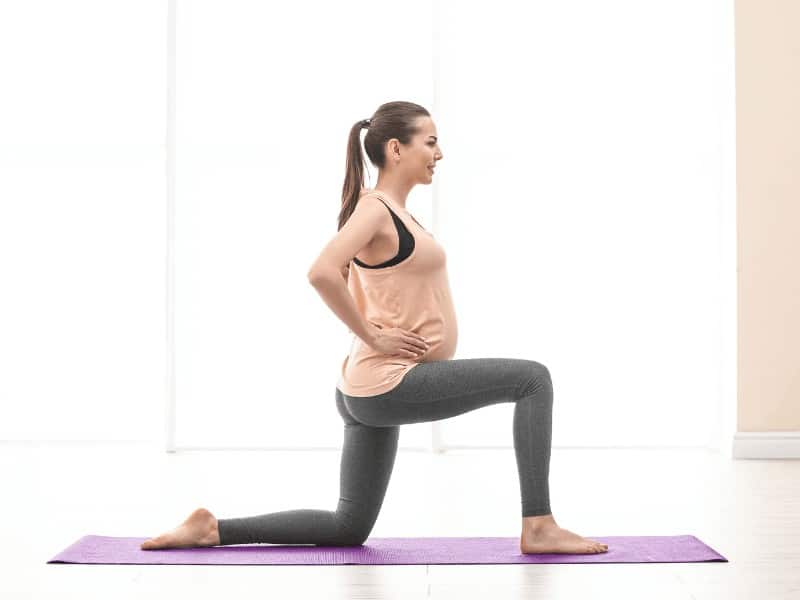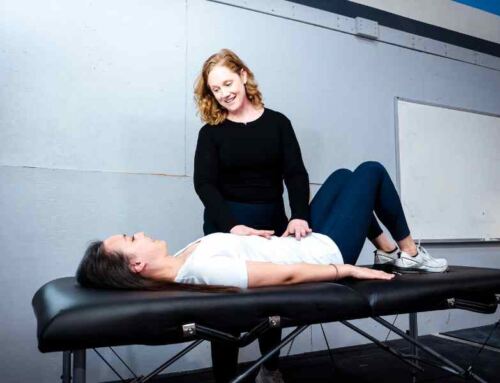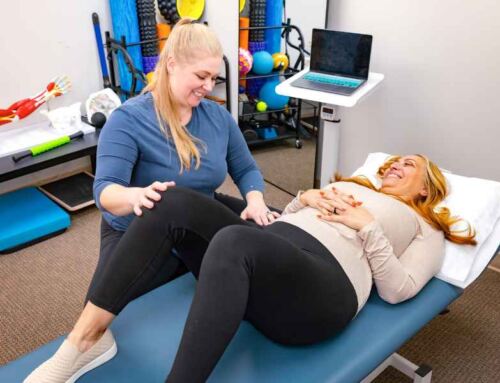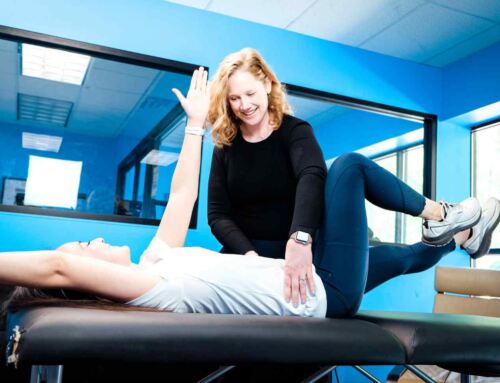A Physical Therapy Guide to Exercising During Pregnancy
I know, I know… when you’re pregnant and exhausted, sometimes exercise can be the last thing on your mind. There are some days when the cellular work of creating a human feels like plenty!
But make sure not to skip out on exercise just because you’re pregnant. Exercise is not only safe to perform during pregnancy (with a few exceptions), it also has a host of benefits for both you and your baby.
Here’s everything you need to know about exercising during pregnancy, from its many benefits, its precautions, and how to perform it safely.
Why Exercise During Pregnancy?
Exercise during pregnancy has been shown to be associated with the following:
- Lower incidences of…
- Excessive gestational weight gain
- Gestational diabetes
- Gestational hypertensive disorders
- Preterm birth
- Cesarean birth (C-section)
- Lower birth weight
- Constipation
- Higher incidence of vaginal delivery
Exercise can also lead to faster and more complete recovery from labor and delivery.
What Are The Risks of Exercising While Pregnant?
In an uncomplicated pregnancy, there are minimal risks to exercising in non-extreme situations—aka avoiding contact sports, skydiving, scuba diving, high-altitude exercising if you live at sea level.
Historically, there was a concern that exercise could cause shunting of blood away from the uterus or cause fetal stress, but there’s no current evidence to support this.
For pregnant people with normal uterine arterial blood flow, both you and your growing baby will adapt to exercise in a way that maintains normal oxygen levels to the uterus and fetus.
Guidelines for Exercise During Pregnancy
ACOG guidelines state that walking, swimming, stationary cycling, and yoga are appropriate during pregnancy.1 For pregnant folks that were active in running, weight lifting, or other higher intensity sports prior to pregnancy, there’s no evidence to suggest that these become unsafe during pregnancy.
Here’s a couple of metrics that may be helpful in guiding your exercise program:
- Rating of perceived exertion (RPE) tends to be a better metric than heart rate during pregnancy. Due to the cardiovascular changes to supply blood to two circulatory systems, heart rate will appear high in the first trimester and low in the third trimester as the heart adapts. Keep your RPE between 13-14 (somewhat hard) for moderate intensity exercise, meaning you can still carry on a conversation while exercising.2
- Laying on your back (supine) for a long period of time after 20 weeks may place pressure on the abdominal aorta from the growing uterus, which can cause dizziness and shortness of breath. If you experience these symptoms, change positions.
- Aquatic exercise, such as swimming or walking in the water, can be a great option if you’re experiencing back or hip pain.
- If you’re having pubic symphysis or hip pain, a sacroiliac (SI) joint belt can help to provide stability to the pelvis, making upright activities more comfortable.
A physical therapist who specializes in women’s health can be a great resource for advising how the above recommendations relate to your specific body, health history, and goals with an individualized treatment plan.

Are There Reasons Why I Shouldn’t Exercise?
There’s a couple of specific situations where exercising during pregnancy is not appropriate—either when the uterus can’t get enough blood, or your probability of preterm labor is increased. These include…
- Significant heart disease
- Restrictive lung disease
- Intrauterine growth restriction
- Incompetent cervix
- Multiple gestation (twins, triplets) with risk for premature labor
- Persistent 2nd and 3rd trimester bleeding
- Placenta previa (after 26 weeks)
- Preterm labor during current pregnancy
- Ruptured membrane
- Pre-eclampsia or pregnancy-induced hypertension
When Should I Stop Exercising?
Exercise during pregnancy is a moving target. As the body continues to change in different ways throughout pregnancy, your ability to run, jump, or lift may also change.
The type and intensity of exercise in your first or second trimester may feel too intense in the third. In many cases, exercise can be scaled for your body’s current abilities, like decreasing frequency of exercise, decreasing length of runs, or decreasing weight that you’re lifting.
In an uncomplicated pregnancy, there are no risks to exercising into the third trimester—even running or lifting—provided there are none of the signs below.
- Vaginal bleeding
- Abdominal pain
- Regular painful contractions
- Amniotic fluid leakage
- Dyspnea before exertion
- Dizziness
- Headache
- Chest pain
- Muscle weakness
- Calf pain or swelling
For most pregnant folks, exercise is safe to do and has a multitude of benefits. If you are experiencing pain or discomfort in any area, exercise may require some modifications, but usually doesn’t have to stop entirely.
A physical therapist can create an individualized exercise program, at any point in your pregnancy, to help you meet your goals. Don’t delay, set up a session today!
References
- Physical activity and exercise during pregnancy and the postpartum period. American College of Obstetrics and Gynecology. https://www.acog.org/clinical/clinical-guidance/committee-opinion/articles/2020/04/physical-activity-and-exercise-during-pregnancy-and-the-postpartum-period. Published 2015. Accessed May 12, 2022.
- Perceived exertion (Borg rating of perceived exertion scale). Centers for Disease Control and Prevention. https://www.cdc.gov/physicalactivity/basics/measuring/exertion.htm. Published April 27, 2022. Accessed May 12, 2022.
About the Author
Dr. Molly Morgan is a physical therapist and pelvic health specialist with MovementX in Portland, OR. She believes that it’s imperative to have a strong, functional foundation in the pelvic floor. Molly Morgan is passionate about treating a variety of pelvic floor conditions, lumbosacral dysfunctions, and hip pain. She is committed to providing one on one care to meet you needs and work towards your goals.








